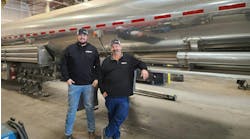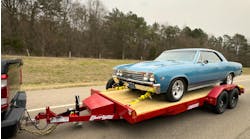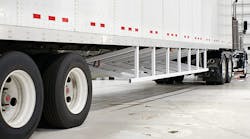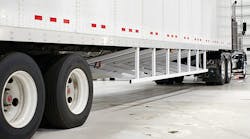Will the third time be the charm?
Sens. Kirsten Gillibrand (D-NY) and Marco Rubio (R-Fla.) and Reps. Steve Cohen (D-Tenn.) and Mark DeSaulnier (D-Calif.) have reintroduced the Stop Underrides Act, which would require underride guards on the sides and front of new trucks and trailers and revise “outdated” standards for underride guards on the rear.
Supporters point to crash studies done by the Insurance Institute for Highway Safety from two years ago that demonstrated the effectiveness of side underride guard systems in protecting automobile occupants in a 30-mph crash.
“This bill would finally enact critical, commonsense changes that would save lives on our roads. Requiring effective truck underride guards is one of the best and easiest solutions to prevent horrific underride accidents and protect passengers from being killed when a car collides with a tractor-trailer,” said Gillibrand—sentiments echoed by the other sponsors.
Highway enforcement agencies have also come out in favor.
“As members of the law enforcement community who proactively inspect commercial motor vehicles for safe mechanical fitness during roadside safety inspections, CVSA member jurisdictions know the importance of taking steps to reduce fatalities and serious injuries on our nation’s roadways,” said Commercial Vehicle Safety Alliance Executive Director Collin Mooney. “If passed, the Stop Underrides Act will help mitigate the severity of underride crashes and make our roadways safer.”
But the real drivers behind the bill are the citizen truck safety groups. The Stop Underrides website is a repository for advocacy resources.
“Thousands of lives have been lost as a result of truck underride. Countless more will die unless the motoring public is protected from this kind of crash,” said Marianne Karth and Lois Durso, Stop Underrides advocates and mothers of crash victims. “It is the duty of the government to protect its citizens. If Congress is unwilling to protect their constituents from death by underride, who will?”
The Institute for Safer Trucking, Citizens for Reliable and Safe Highways (CRASH), and Advocates for Highway and Auto Safety also support the bill.
"For over 37 years, I have dedicated my life to preventing underride crashes by supporting overdue action by the U.S. Department of Transportation to issue federal safety standards requiring effective underride guards on trucks," CRASH board member Jennifer Tierney said. "That changes with the introduction of the Stop Underrides Act. It directs agency rulemakings which will make trucks safer, protect motorists and spare families like mine the loss of a loved one."
Such a bill went nowhere in 2017 and 2019, but the sponsors have taken out the retrofit requirement—the huge price tag of equipping every trailer on the road with additional safety gear was a significant factor in the previous bills’ demise.
That, and the previous Congress and administration were less inclined to regulate. But the political times have changed.
The other arguments against a side underride guard mandate, however, remain.
“We have yet to see evidence that side underride guards would be an effective safety countermeasure," American Trucking Associations Vice President of Public Affairs and Press Secretary Sean McNally said. "Until these devices can be shown to be reliable outside the test track, we believe Congress and regulators should focus on reducing crashes by addressing aggressive and distracted driving and investing in existing, proven safety technologies, including emerging connected vehicle technology.”
In a March 11 letter to the leadership of the respective transportation committees in Congress, ATA states its support for the goal of zero highway fatalities, but details a host of objections, both broad and specific, to the legislation.
Broadly, ATA points out that the industry spends $10 billion annually in safety initiatives, including the latest technologies and driver training and management. ATA also notes that trucking companies have opposed the legislation because it “promotes a solution that is neither data-driven nor proven to be effective in real-world highway settings,” and entails potentially “dangerous” and “unintended” consequences.
Instead, ATA argues that the bill ignores the effectiveness of proven safety technologies such as automatic emergency breaking and lane keeping. Likewise, trucking is a diverse industry and equipment investments that make sense for one company might not make sense for another.
More specifically, ATA points to a GAO study from 2019 that called for additional research “to better understand the overall effectiveness and cost associated with these guards.” And until such research is undertaken, any legislation would be “premature.”
ATA also calls for “real-world” testing—with both vehicles moving at highway speeds, and with impacts at different angles—rather than the closed-course, stationary truck tests done by IIHS. ATA discounts the notion its support of stronger read impact guards means the industry should welcome side guards: Comparing the 8-foot rear guard developed over 70 years to a 40-foot side guards is “apples and oranges.”
Nor does the legislation account for “engineering tradeoffs,” such the as the impact of heavy guards on the long-term structural integrity of the trailer, and related issues with ground clearance and moveable trailer axles, ATA continues. Likewise, rigid side guards would not work well with tank and bulk trailers, while flatbed trailers are designed with a curve to support heavy weights, and intermodal trailers are designed to be shipped as multiple units stacked together when unloaded.
The Truck Trailer Manufacturers Association has initially declined to respond to the introduction of the latest underride bill, pending the official posting of the text. But TTMA President Jeff Sims opposed previous versions, noting that the significant additional weight from side underride guards would reduce payloads, in turn leading to more truck trips—and, statistically, additional safety risk. TTMA also has voiced operational concerns, such as high-centering at rail grades.
However, “TTMA stands ready to work with DOT/NHTSA when a rule is published,” Sims told Trailer/Body Builders.











